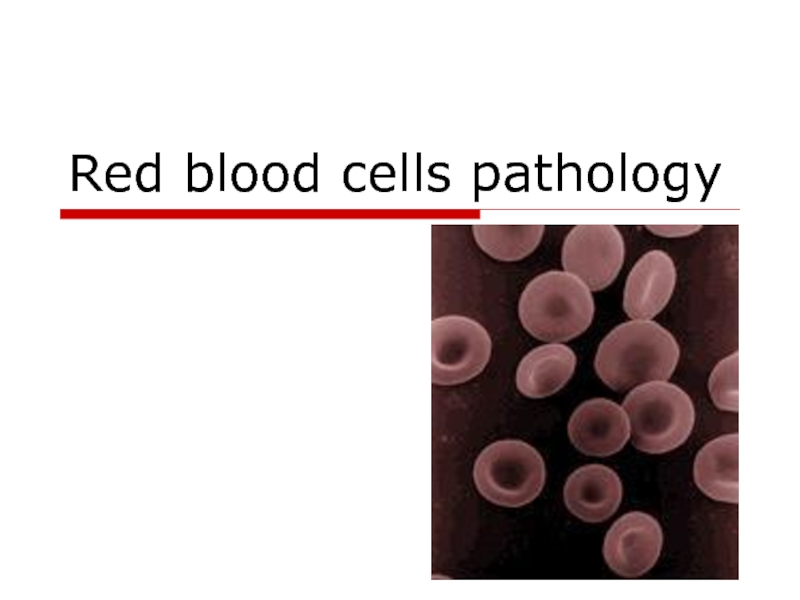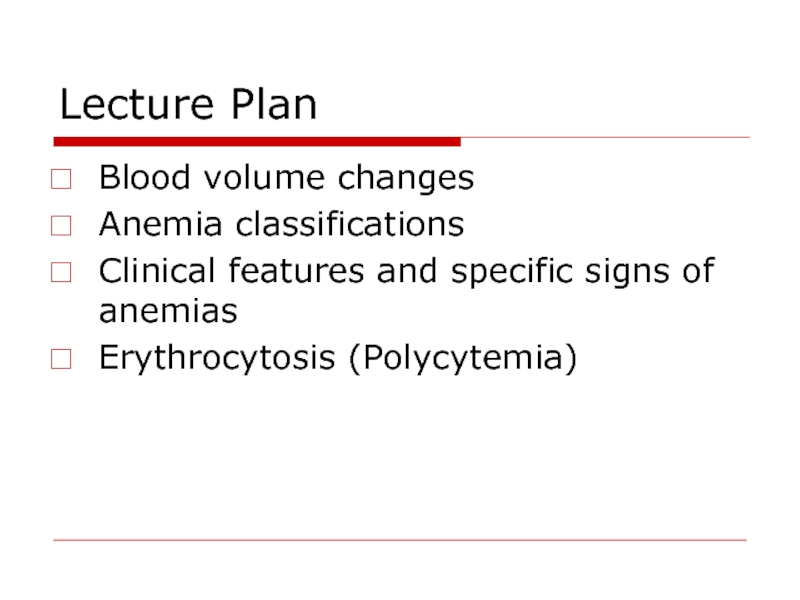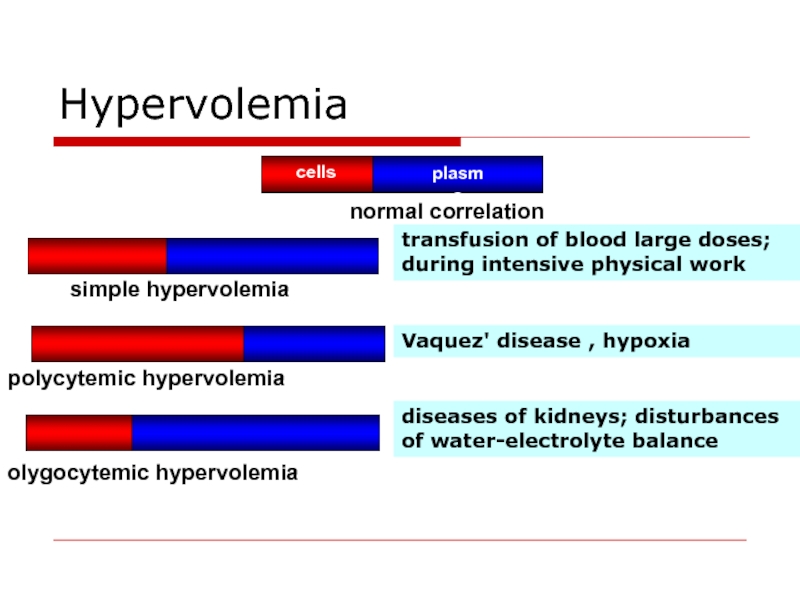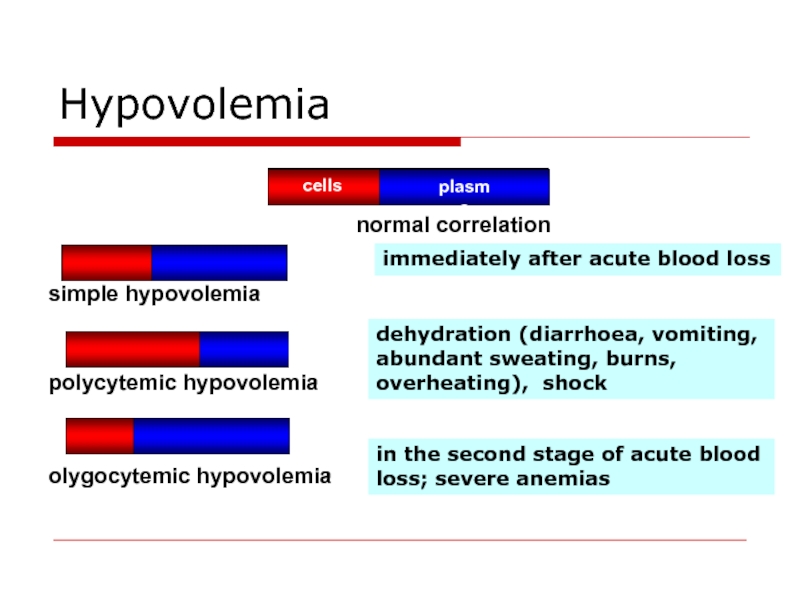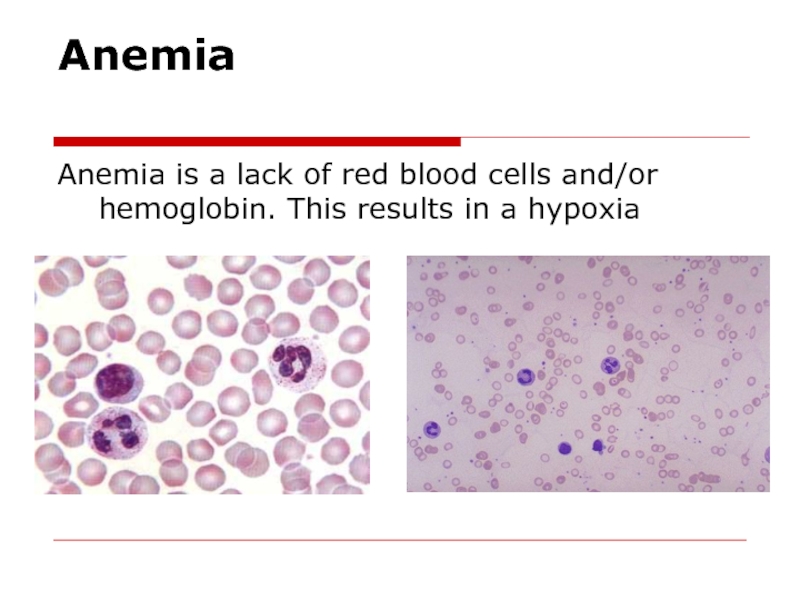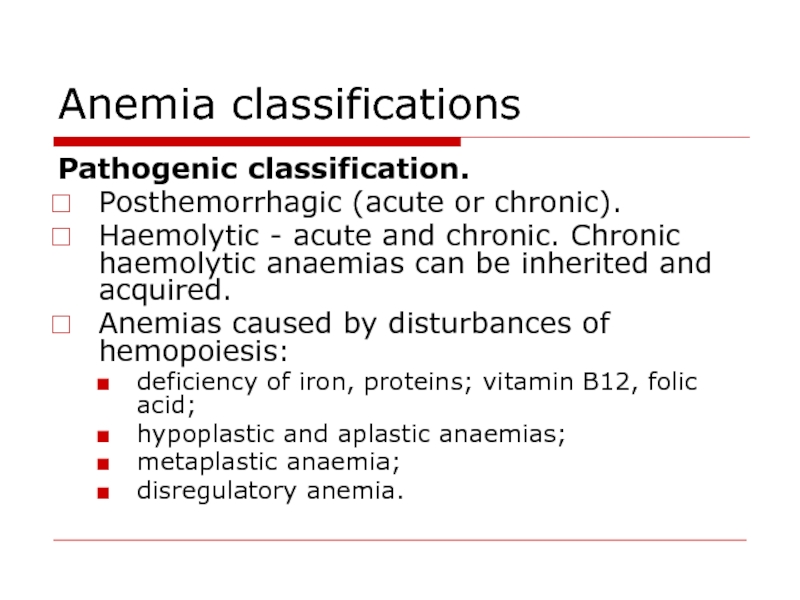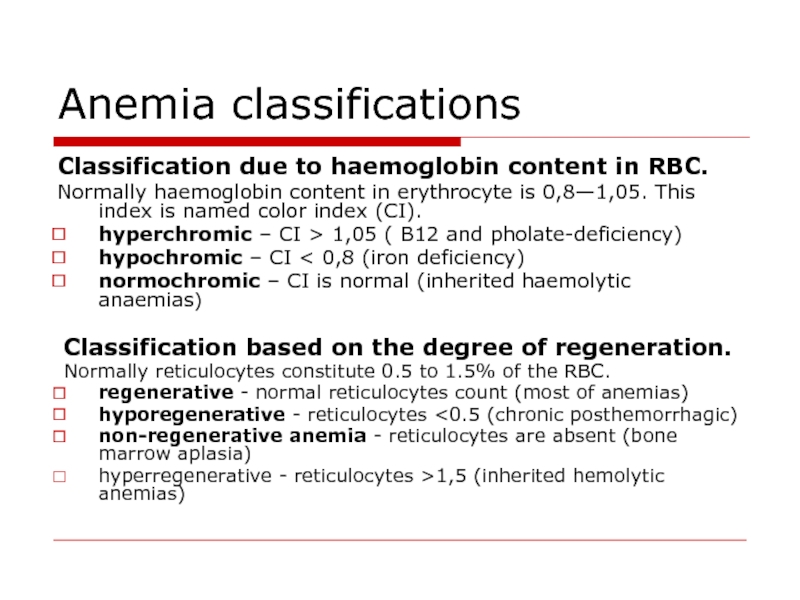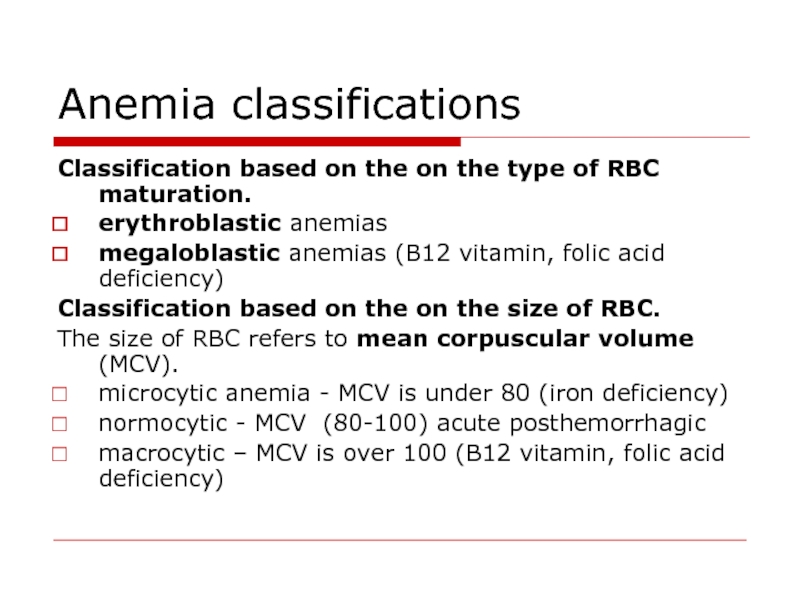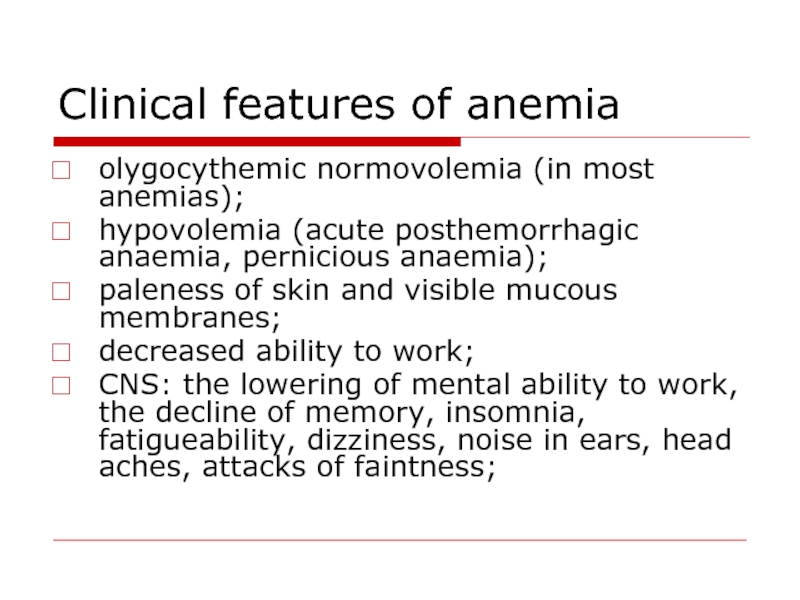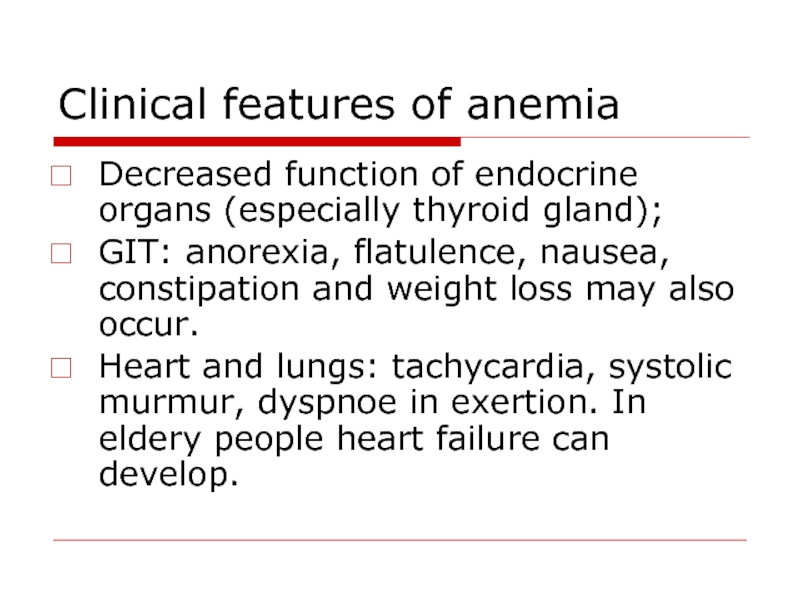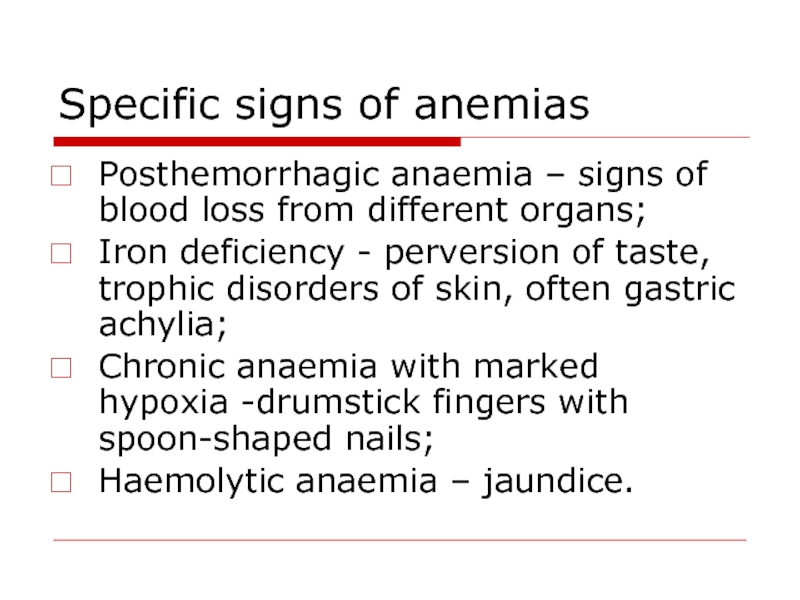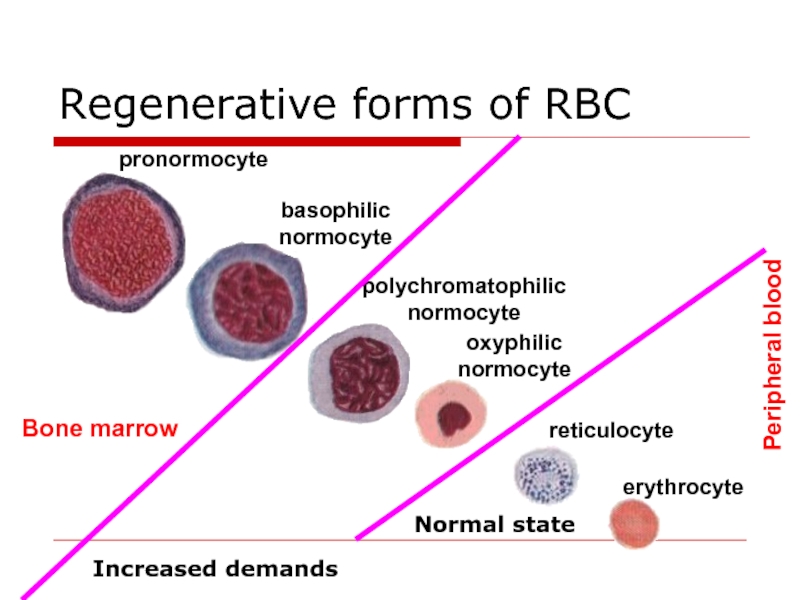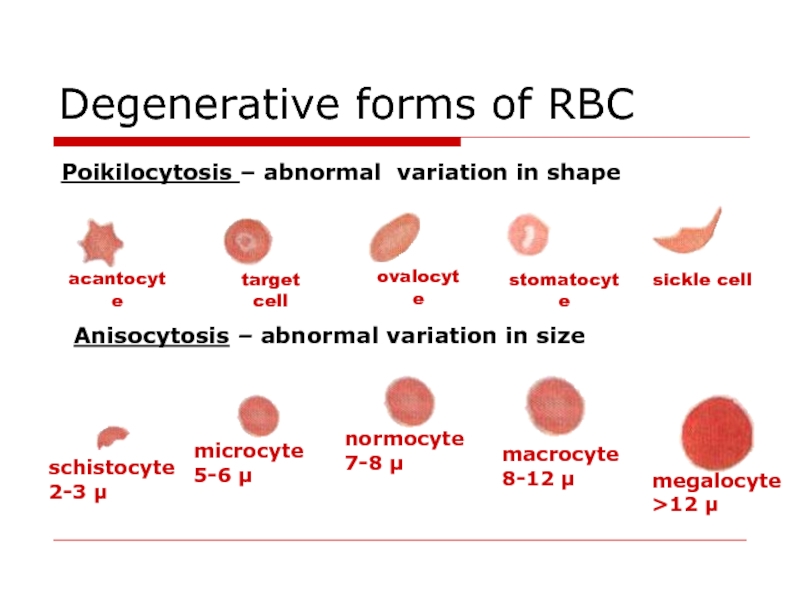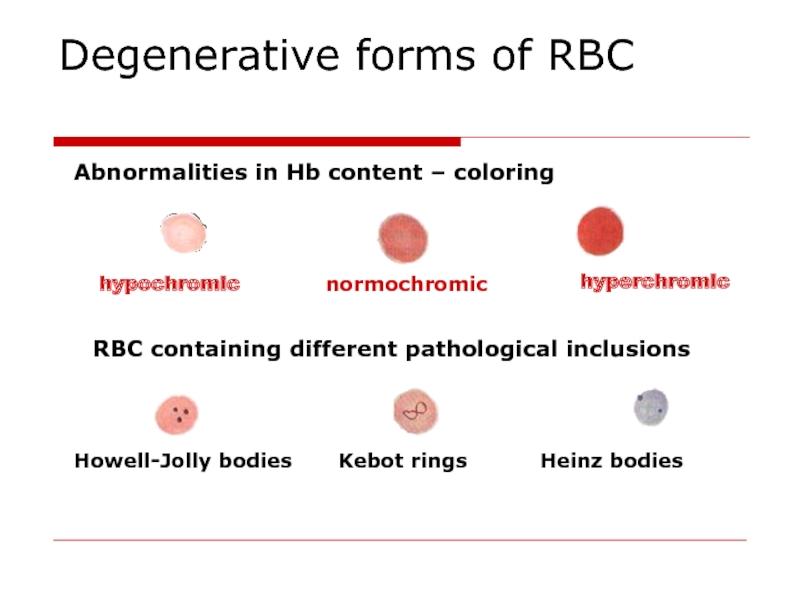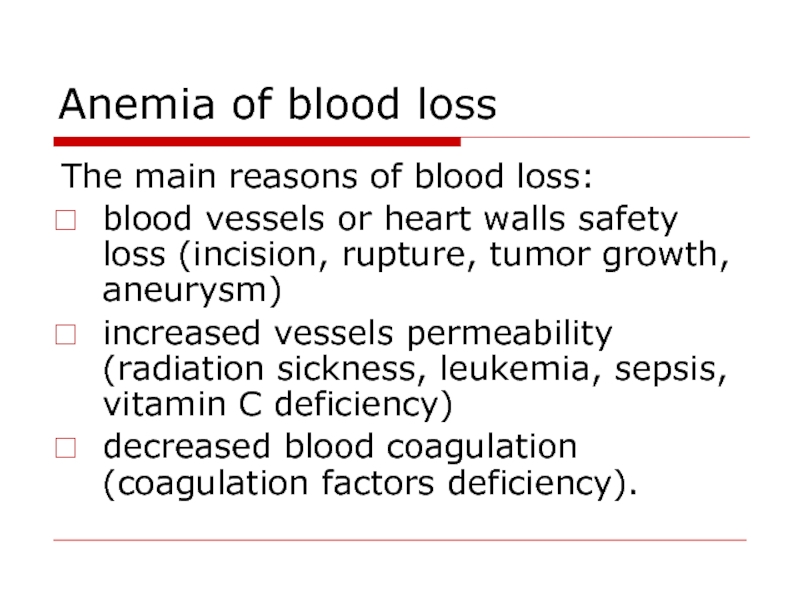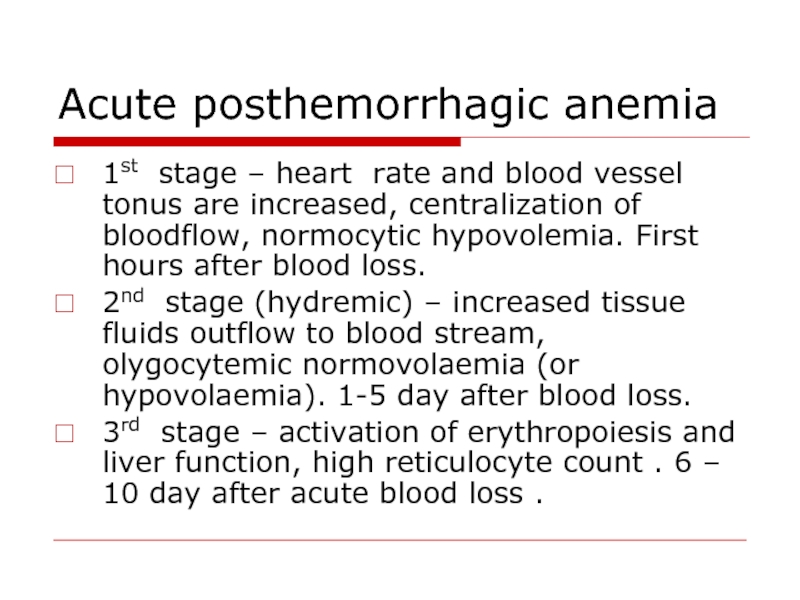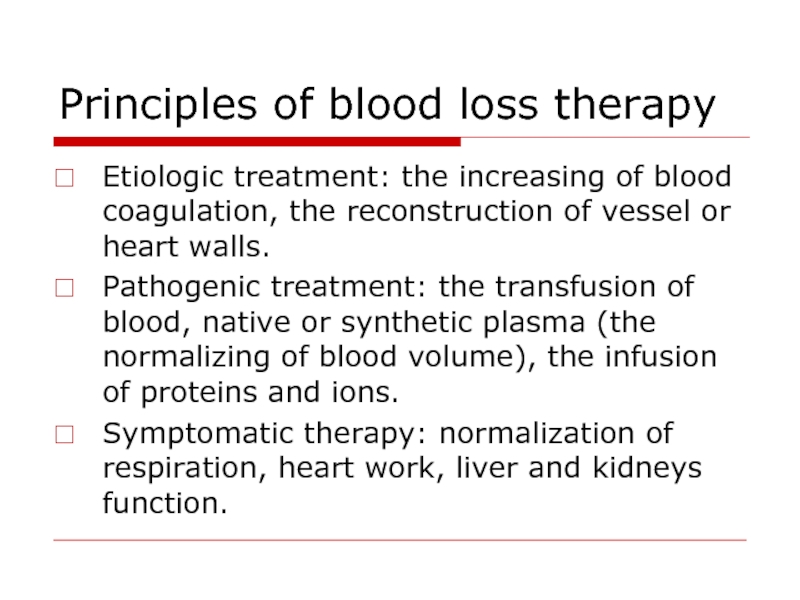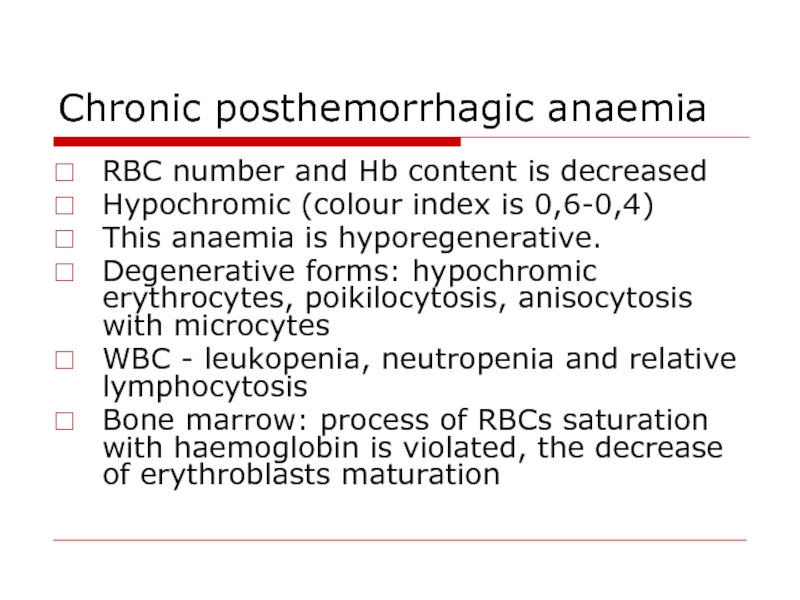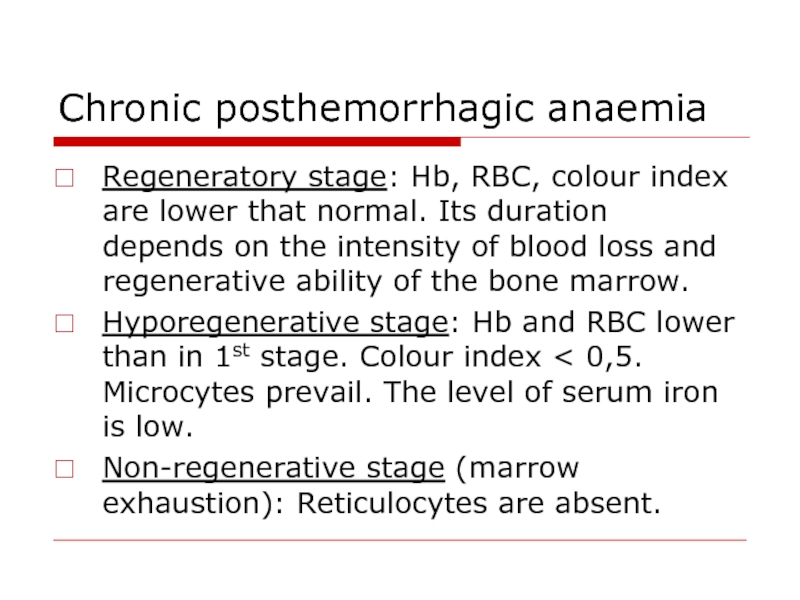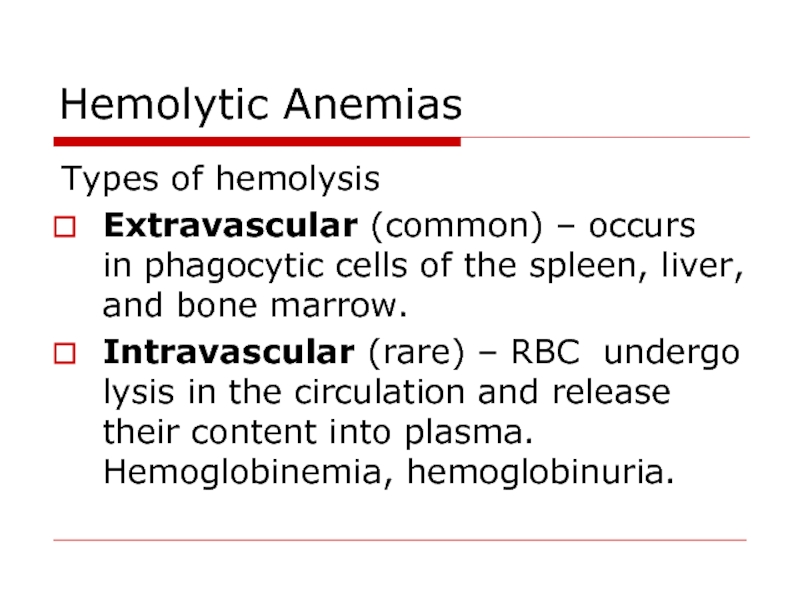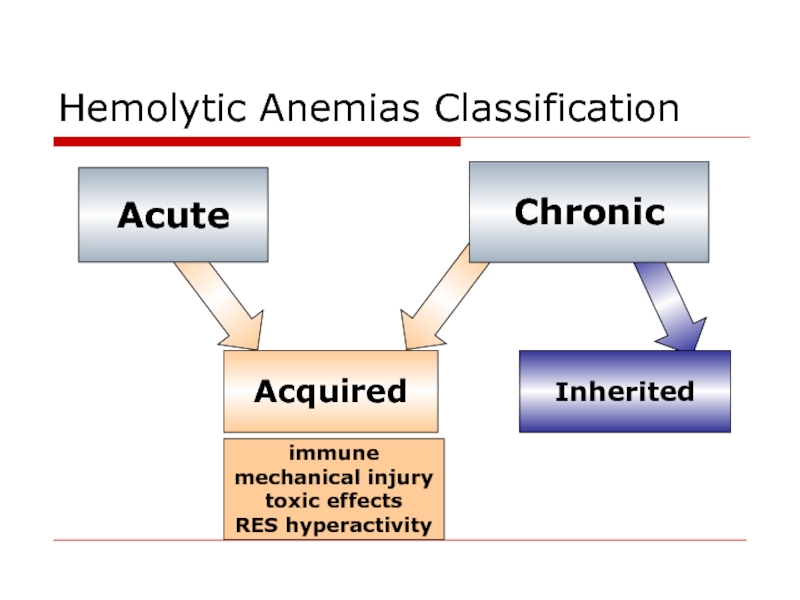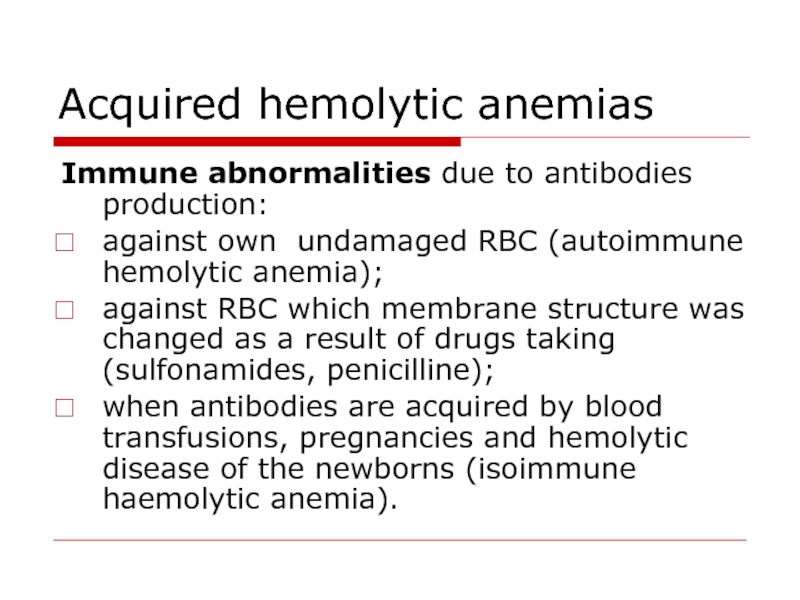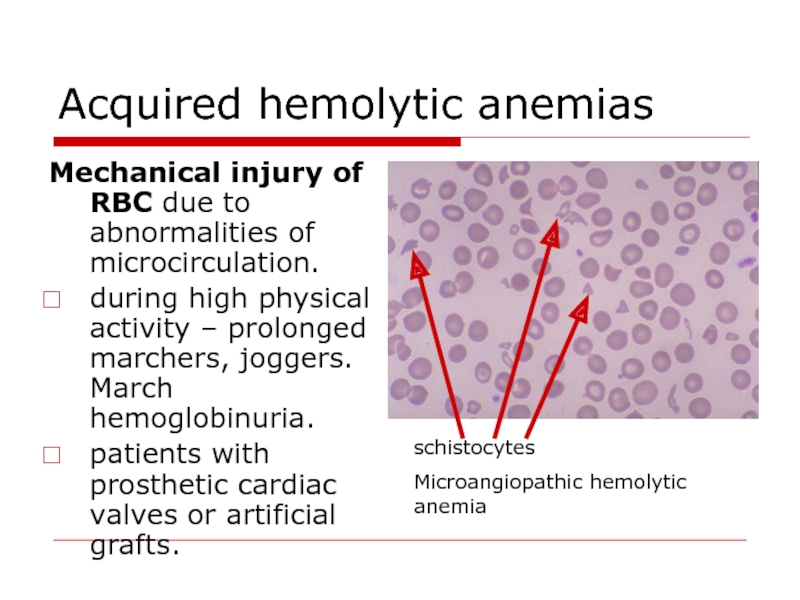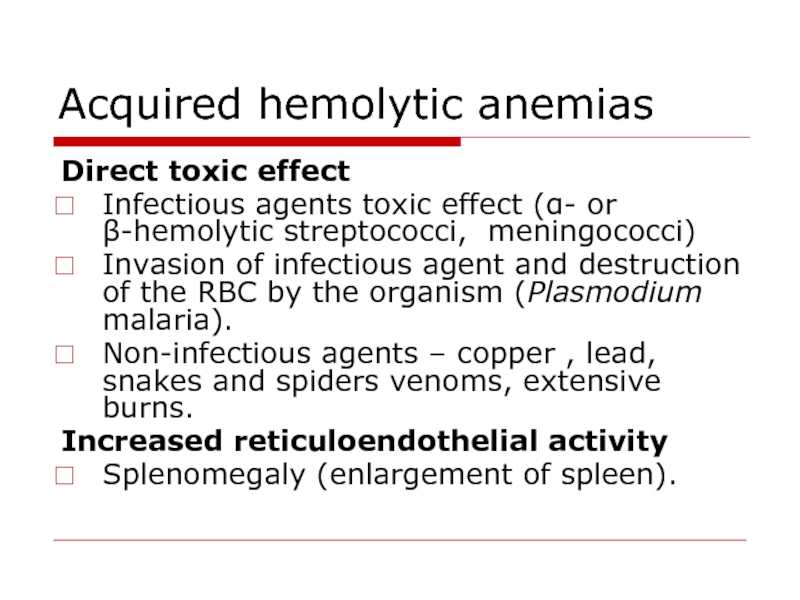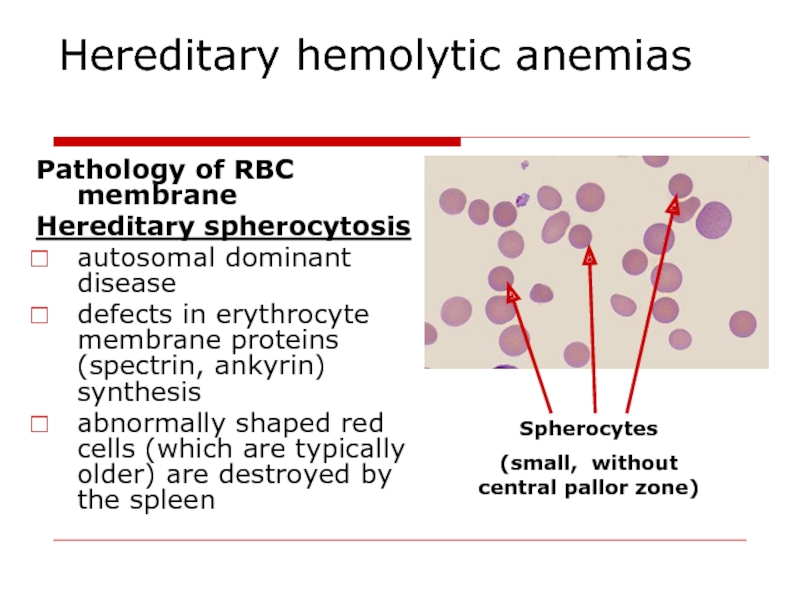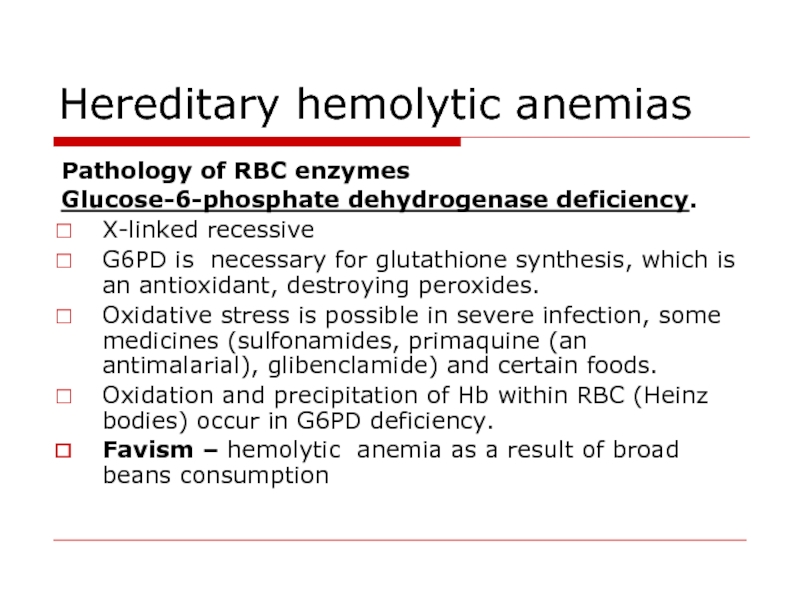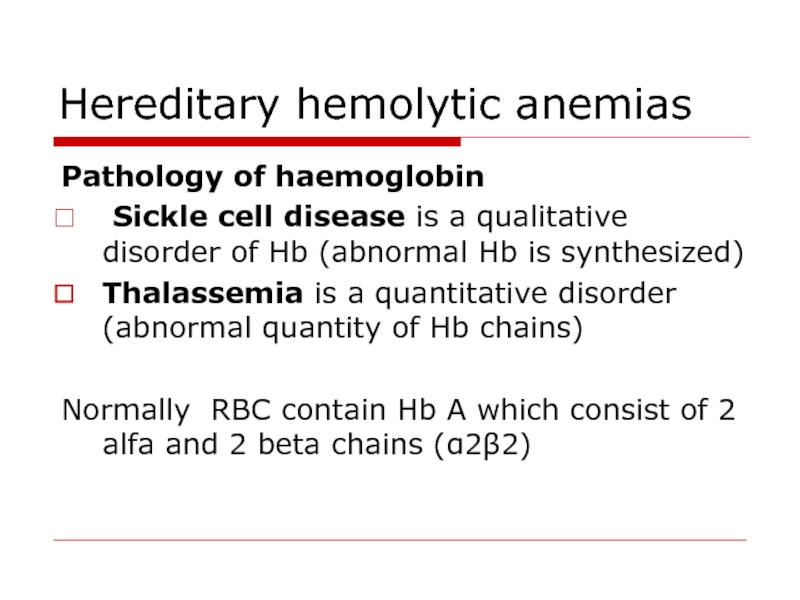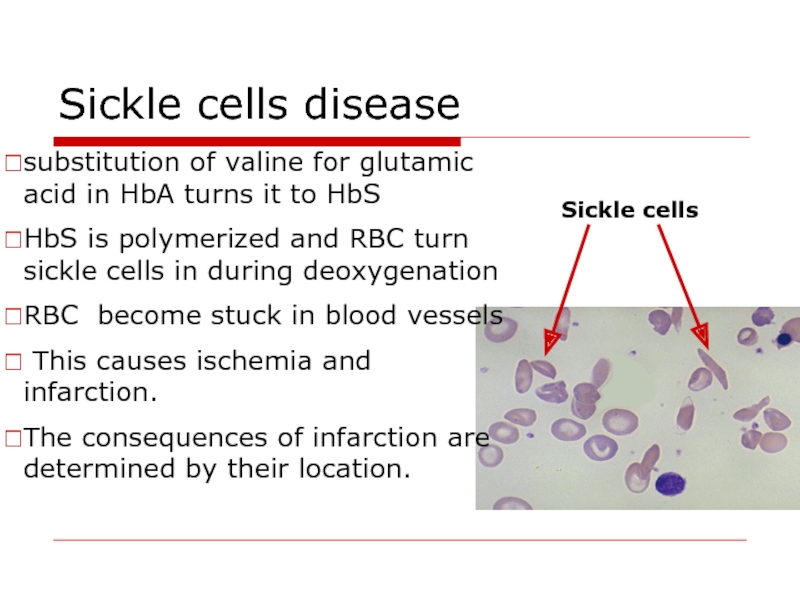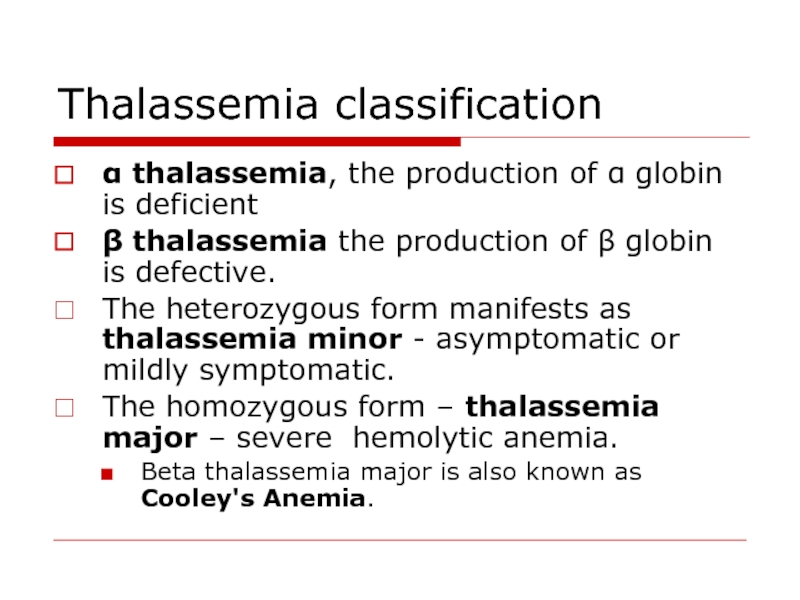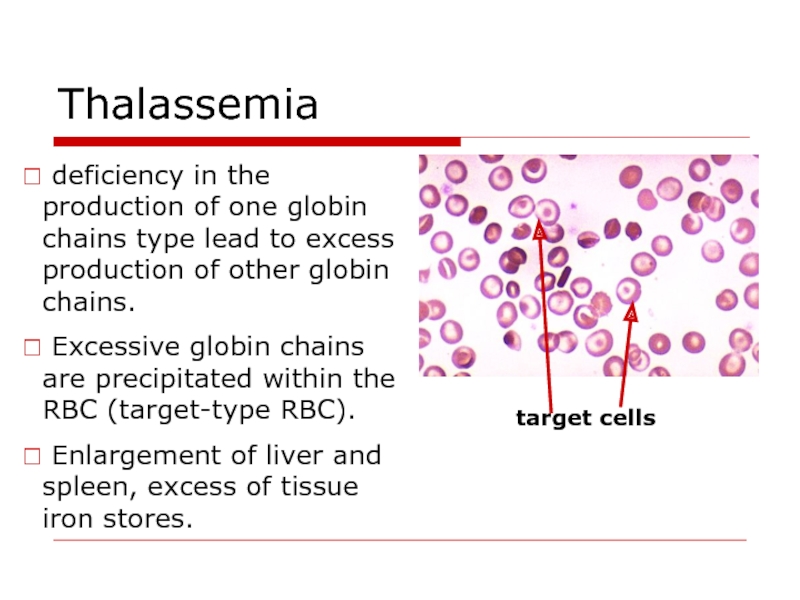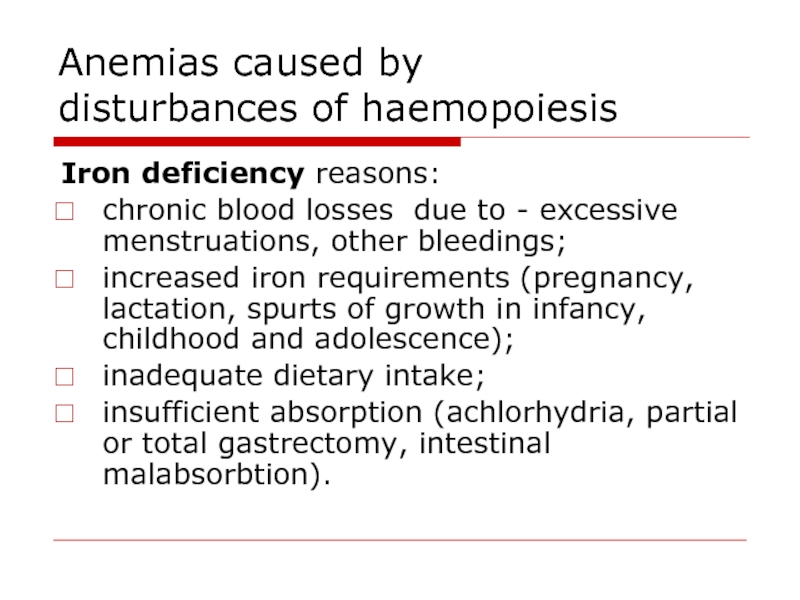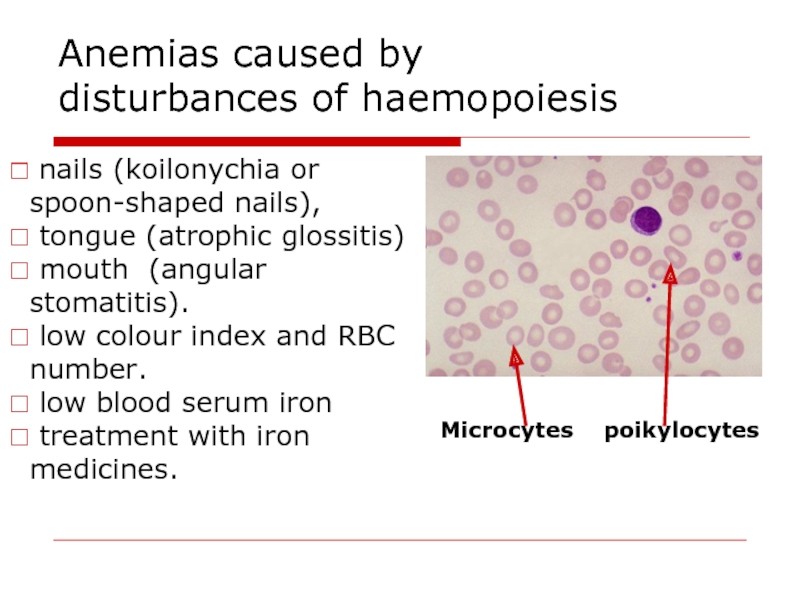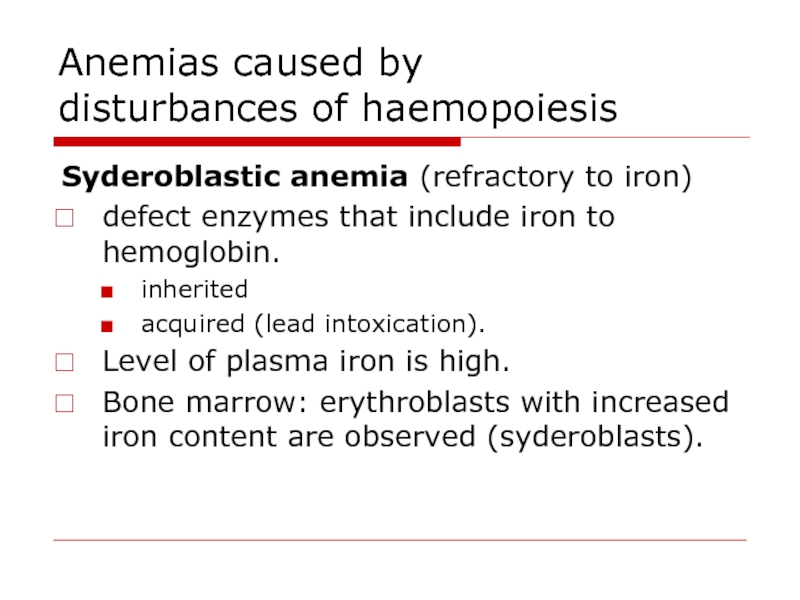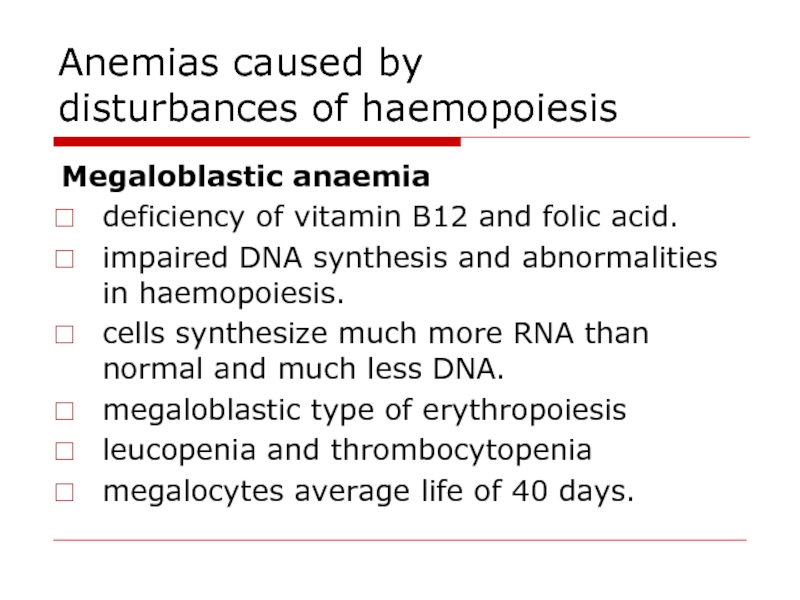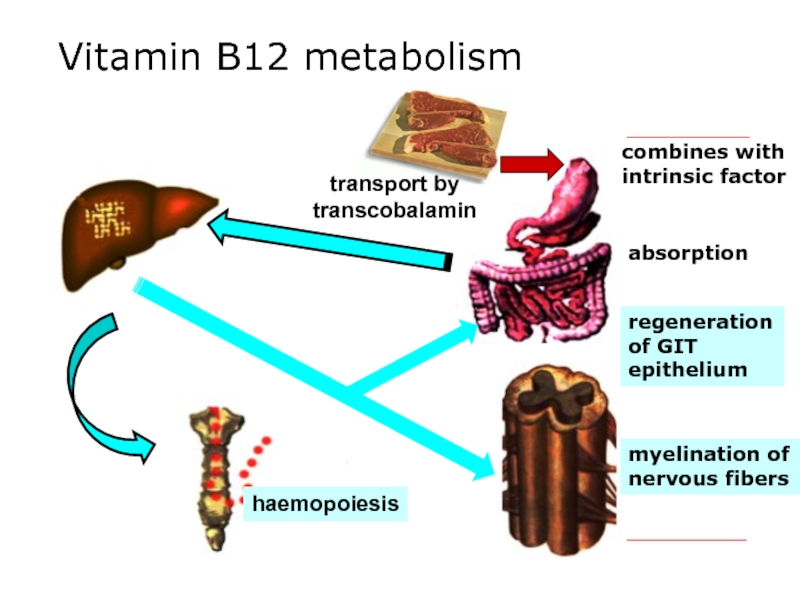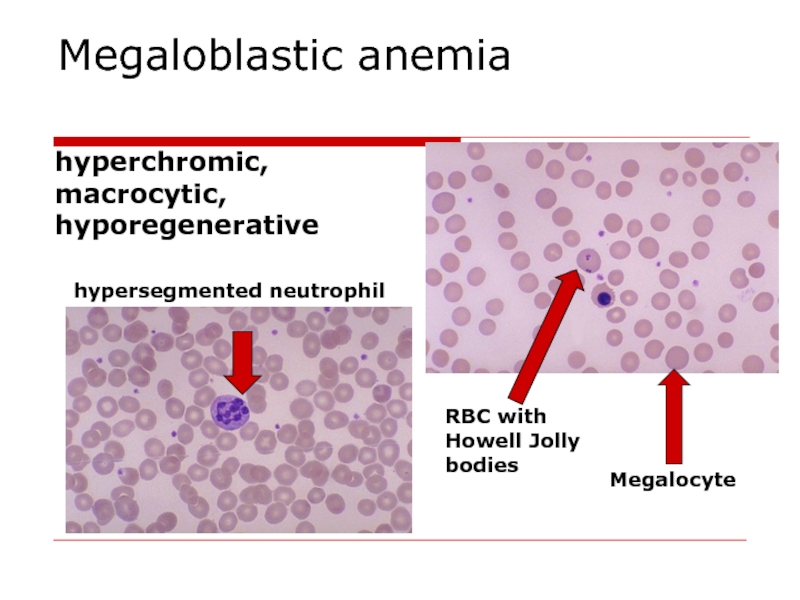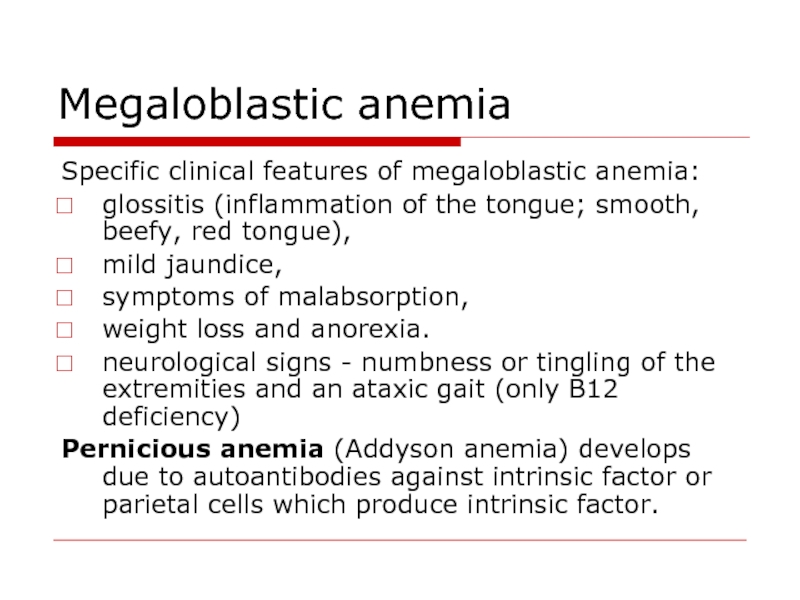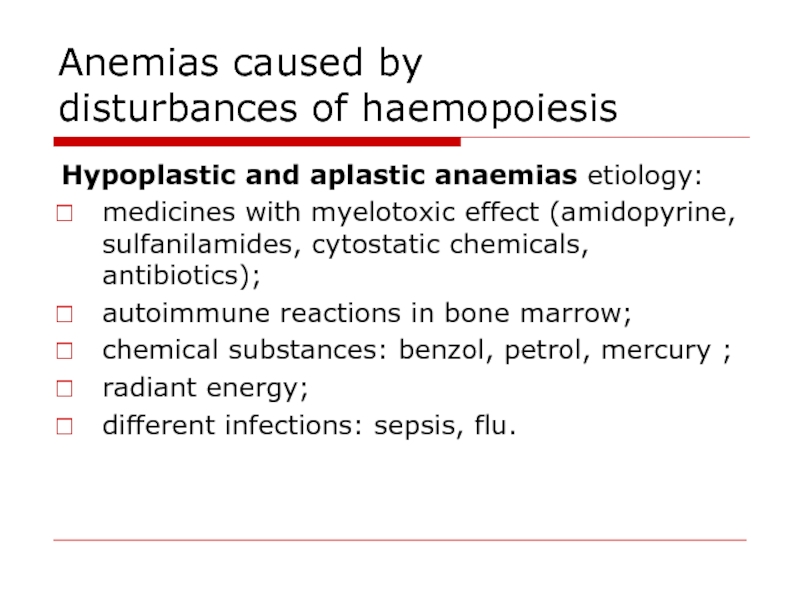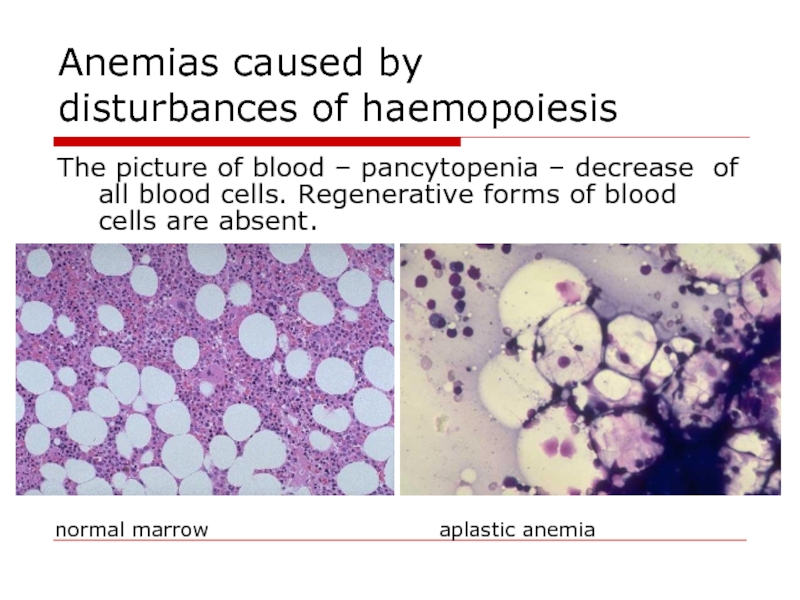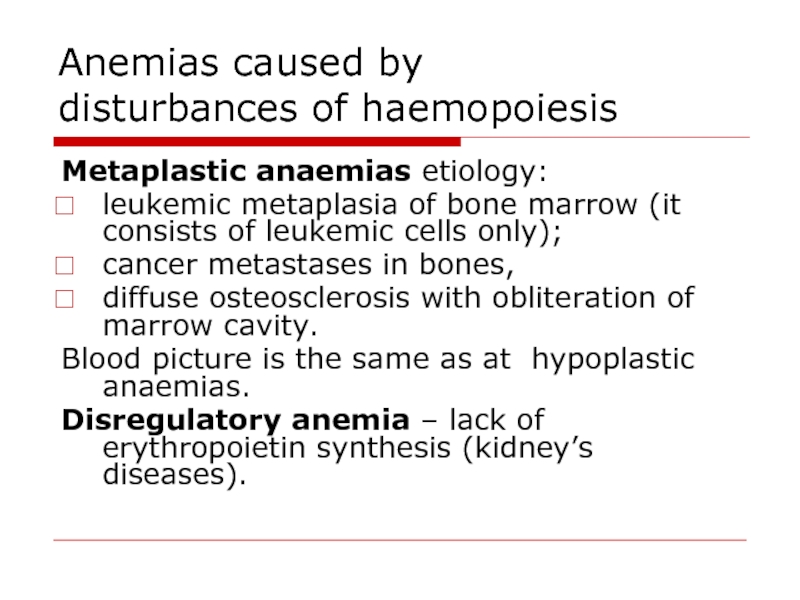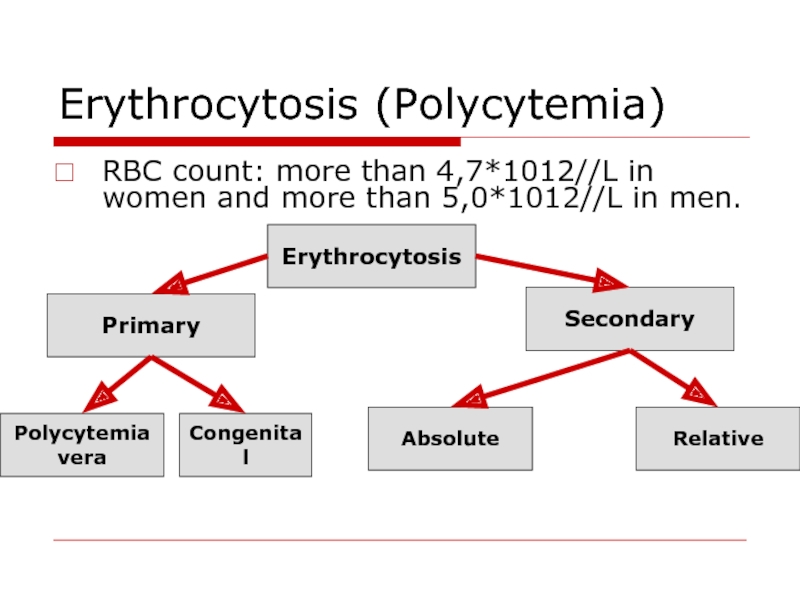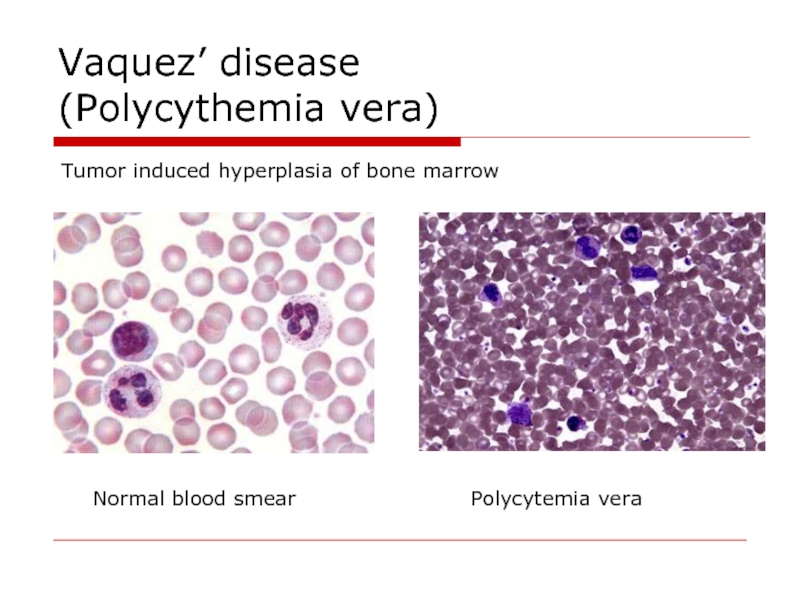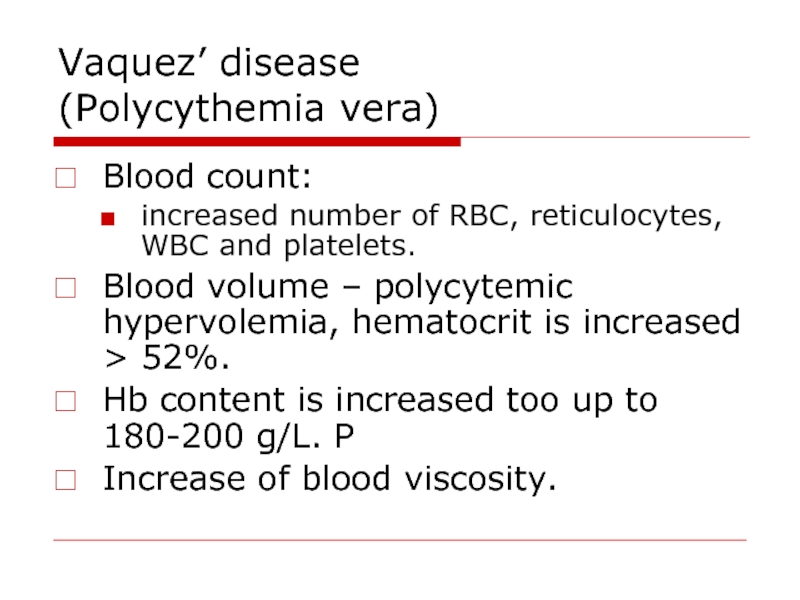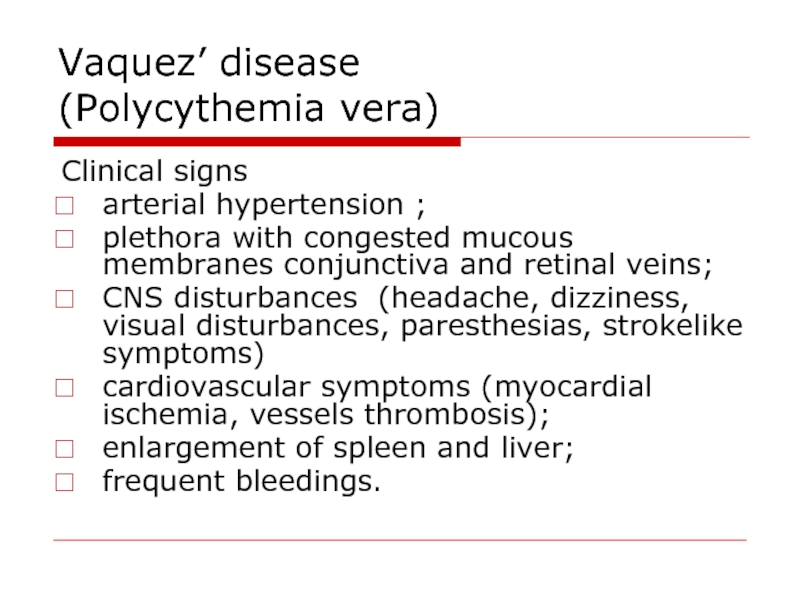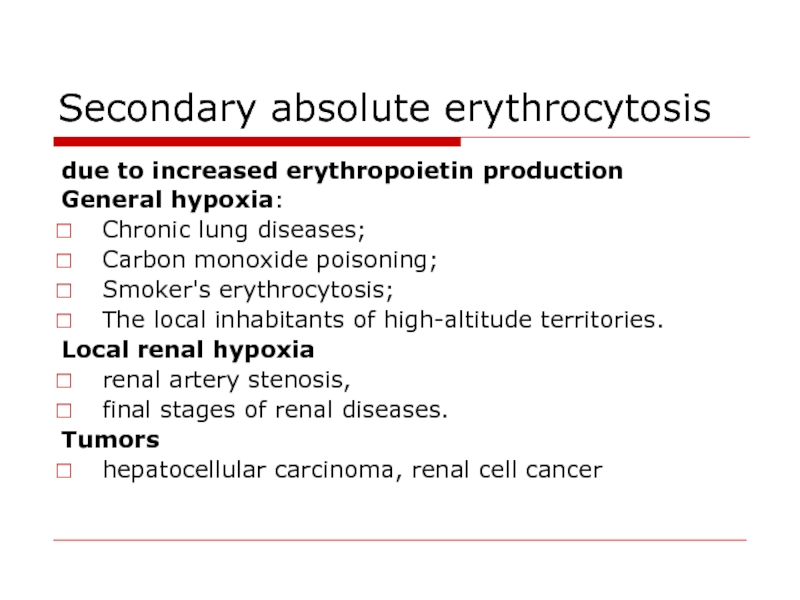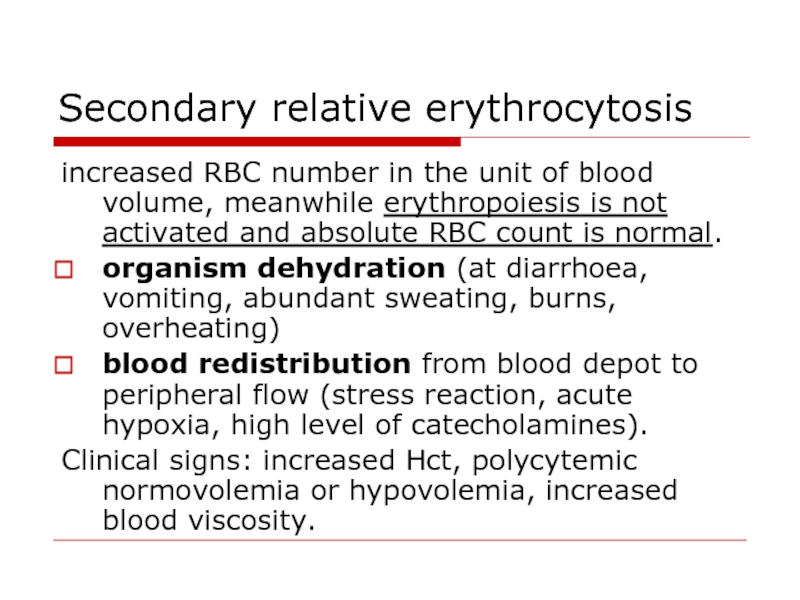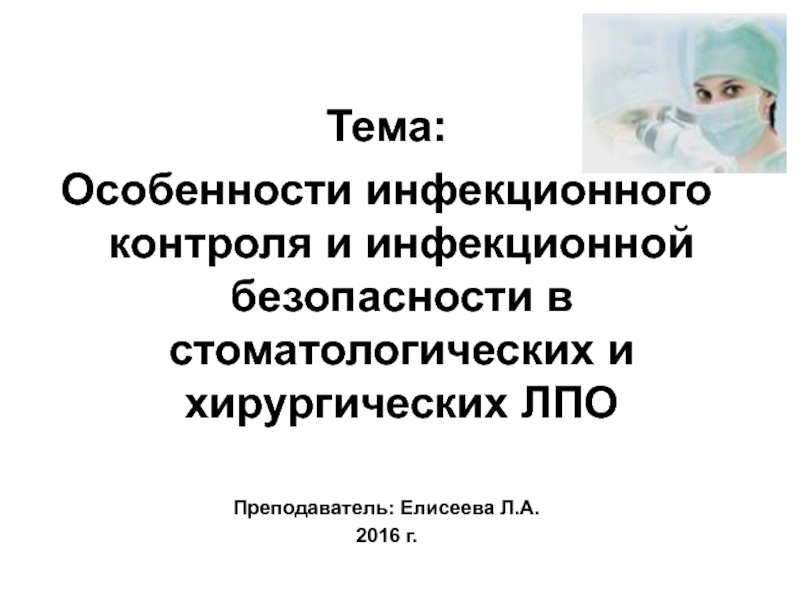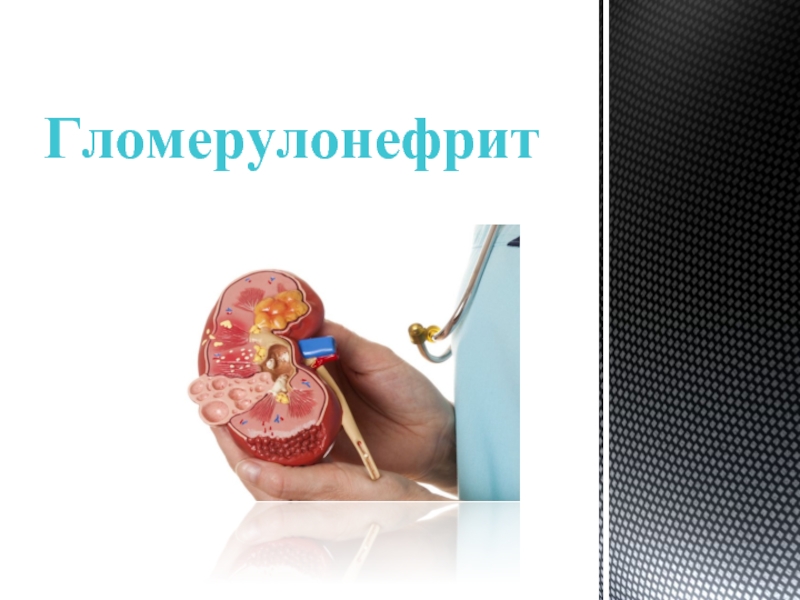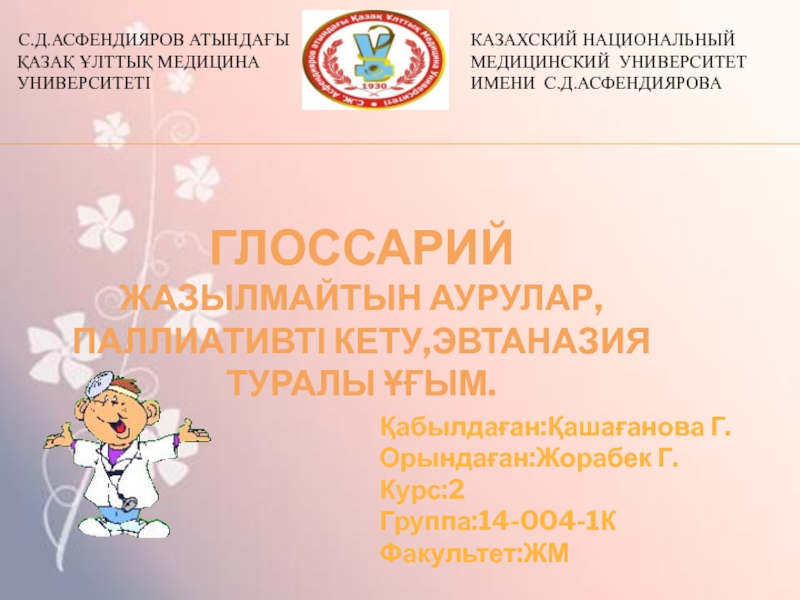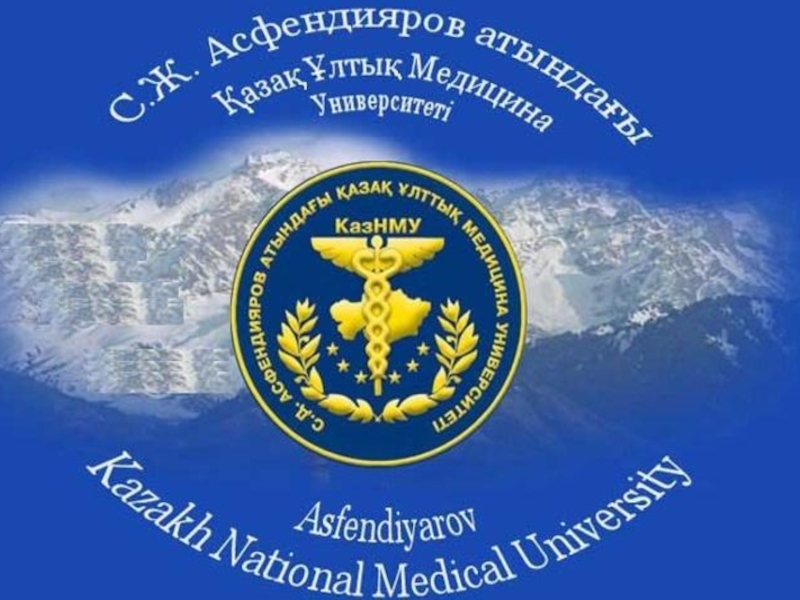- Главная
- Разное
- Дизайн
- Бизнес и предпринимательство
- Аналитика
- Образование
- Развлечения
- Красота и здоровье
- Финансы
- Государство
- Путешествия
- Спорт
- Недвижимость
- Армия
- Графика
- Культурология
- Еда и кулинария
- Лингвистика
- Английский язык
- Астрономия
- Алгебра
- Биология
- География
- Детские презентации
- Информатика
- История
- Литература
- Маркетинг
- Математика
- Медицина
- Менеджмент
- Музыка
- МХК
- Немецкий язык
- ОБЖ
- Обществознание
- Окружающий мир
- Педагогика
- Русский язык
- Технология
- Физика
- Философия
- Химия
- Шаблоны, картинки для презентаций
- Экология
- Экономика
- Юриспруденция
Red blood cells pathology. (Subject 10) презентация
Содержание
- 1. Red blood cells pathology. (Subject 10)
- 2. Lecture Plan Blood volume changes Anemia classifications
- 3. Hypervolemia transfusion of blood large doses; during
- 4. Hypovolemia dehydration (diarrhoea, vomiting, abundant sweating, burns,
- 5. Anemia Anemia is a lack of red
- 6. Anemia classifications Pathogenic classification. Posthemorrhagic (acute
- 7. Anemia classifications Classification due to haemoglobin content
- 8. Anemia classifications Classification based on the on
- 9. Clinical features of anemia olygocythemic normovolemia
- 10. Clinical features of anemia Decreased function of
- 11. Specific signs of anemias Posthemorrhagic anaemia –
- 12. Regenerative forms of RBC Bone marrow Peripheral blood Normal state Increased demands
- 13. Degenerative forms of RBC Poikilocytosis – abnormal
- 14. Degenerative forms of RBC Abnormalities in Hb
- 15. Anemia of blood loss The main reasons
- 16. Acute posthemorrhagic anemia 1st stage – heart
- 17. Principles of blood loss therapy Etiologic treatment:
- 18. Chronic posthemorrhagic anaemia RBC number and
- 19. Chronic posthemorrhagic anaemia Regeneratory stage: Hb, RBC,
- 20. Hemolytic Anemias Types of hemolysis Extravascular (common)
- 21. Hemolytic Anemias Classification Acute
- 22. Acquired hemolytic anemias Immune abnormalities due to
- 23. Acquired hemolytic anemias Mechanical injury of RBC
- 24. Acquired hemolytic anemias Direct toxic effect
- 25. Hereditary hemolytic anemias Pathology of RBC
- 26. Hereditary hemolytic anemias Pathology of RBC enzymes
- 27. Hereditary hemolytic anemias Pathology of haemoglobin
- 28. Sickle cells disease substitution of valine for
- 29. Thalassemia classification α thalassemia, the production of
- 30. Thalassemia deficiency in the production of
- 31. Anemias caused by disturbances of haemopoiesis
- 32. Anemias caused by disturbances of haemopoiesis
- 33. Anemias caused by disturbances of haemopoiesis
- 34. Anemias caused by disturbances of haemopoiesis
- 35. Megaloblastic anemia The reasons of B12 deficiency:
- 36. Vitamin B12 metabolism transport by
- 37. Megaloblastic anemia hyperchromic, macrocytic, hyporegenerative hypersegmented
- 38. Megaloblastic anemia Specific clinical features of megaloblastic
- 39. Anemias caused by disturbances of haemopoiesis
- 40. Anemias caused by disturbances of haemopoiesis
- 41. Anemias caused by disturbances of haemopoiesis
- 42. Erythrocytosis (Polycytemia) RBC count: more than 4,7*1012//L
- 43. Vaquez’ disease (Polycythemia vera) Tumor
- 44. Vaquez’ disease (Polycythemia vera) Blood count:
- 45. Vaquez’ disease (Polycythemia vera) Clinical signs
- 46. Secondary absolute erythrocytosis due to increased
- 47. Secondary relative erythrocytosis increased RBC number
Слайд 2Lecture Plan
Blood volume changes
Anemia classifications
Clinical features and specific signs of anemias
Erythrocytosis
Слайд 3Hypervolemia
transfusion of blood large doses; during intensive physical work
Vaquez' disease
diseases of kidneys; disturbances of water-electrolyte balance
Слайд 4Hypovolemia
dehydration (diarrhoea, vomiting, abundant sweating, burns, overheating), shock
in the second
immediately after acute blood loss
Слайд 6Anemia classifications
Pathogenic classification.
Posthemorrhagic (acute or chronic).
Haemolytic - acute and chronic.
Anemias caused by disturbances of hemopoiesis:
deficiency of iron, proteins; vitamin В12, folic acid;
hypoplastic and aplastic anaemias;
metaplastic anaemia;
disregulatory anemia.
Слайд 7Anemia classifications
Classification due to haemoglobin content in RBC.
Normally haemoglobin content
hyperchromic – CI > 1,05 ( В12 and pholate-deficiency)
hypochromic – CI < 0,8 (iron deficiency)
normochromic – CI is normal (inherited haemolytic anaemias)
Classification based on the degree of regeneration.
Normally reticulocytes constitute 0.5 to 1.5% of the RBC.
regenerative - normal reticulocytes count (most of anemias)
hyporegenerative - reticulocytes <0.5 (chronic posthemorrhagic)
non-regenerative anemia - reticulocytes are absent (bone marrow aplasia)
hyperregenerative - reticulocytes >1,5 (inherited hemolytic anemias)
Слайд 8Anemia classifications
Classification based on the on the type of RBC maturation.
erythroblastic anemias
megaloblastic anemias (B12 vitamin, folic acid deficiency)
Classification based on the on the size of RBC.
The size of RBC refers to mean corpuscular volume (MCV).
microcytic anemia - MCV is under 80 (iron deficiency)
normocytic - MCV (80-100) acute posthemorrhagic
macrocytic – MCV is over 100 (B12 vitamin, folic acid deficiency)
Слайд 9Clinical features of anemia
olygocythemic normovolemia (in most anemias);
hypovolemia (acute posthemorrhagic
paleness of skin and visible mucous membranes;
decreased ability to work;
CNS: the lowering of mental ability to work, the decline of memory, insomnia, fatigueability, dizziness, noise in ears, head aches, attacks of faintness;
Слайд 10Clinical features of anemia
Decreased function of endocrine organs (especially thyroid gland);
GIT:
Heart and lungs: tachycardia, systolic murmur, dyspnoe in exertion. In eldery people heart failure can develop.
Слайд 11Specific signs of anemias
Posthemorrhagic anaemia – signs of blood loss from
Iron deficiency - perversion of taste, trophic disorders of skin, often gastric achylia;
Chronic anaemia with marked hypoxia -drumstick fingers with spoon-shaped nails;
Haemolytic anaemia – jaundice.
Слайд 13Degenerative forms of RBC
Poikilocytosis – abnormal variation in shape
target cell
sickle cell
Anisocytosis
Слайд 14Degenerative forms of RBC
Abnormalities in Hb content – coloring
hypochromic
normochromic
RBC containing
Howell-Jolly bodies
Kebot rings
Heinz bodies
Слайд 15Anemia of blood loss
The main reasons of blood loss:
blood vessels or
increased vessels permeability (radiation sickness, leukemia, sepsis, vitamin C deficiency)
decreased blood coagulation (coagulation factors deficiency).
Слайд 16Acute posthemorrhagic anemia
1st stage – heart rate and blood vessel tonus
2nd stage (hydremic) – increased tissue fluids outflow to blood stream, olygocytemic normovolaemia (or hypovolaemia). 1-5 day after blood loss.
3rd stage – activation of erythropoiesis and liver function, high reticulocyte count . 6 – 10 day after acute blood loss .
Слайд 17Principles of blood loss therapy
Etiologic treatment: the increasing of blood coagulation,
Pathogenic treatment: the transfusion of blood, native or synthetic plasma (the normalizing of blood volume), the infusion of proteins and ions.
Symptomatic therapy: normalization of respiration, heart work, liver and kidneys function.
Слайд 18Chronic posthemorrhagic anaemia
RBC number and Hb content is decreased
Hypochromic (colour
This anaemia is hyporegenerative.
Degenerative forms: hypochromic erythrocytes, poikilocytosis, anisocytosis with microcytes
WBC - leukopenia, neutropenia and relative lymphocytosis
Bone marrow: process of RBCs saturation with haemoglobin is violated, the decrease of erythroblasts maturation
Слайд 19Chronic posthemorrhagic anaemia
Regeneratory stage: Hb, RBC, colour index are lower that
Hyporegenerative stage: Hb and RBC lower than in 1st stage. Colour index < 0,5. Microcytes prevail. The level of serum iron is low.
Non-regenerative stage (marrow exhaustion): Reticulocytes are absent.
Слайд 20Hemolytic Anemias
Types of hemolysis
Extravascular (common) – occurs in phagocytic cells of
Intravascular (rare) – RBC undergo lysis in the circulation and release their content into plasma. Hemoglobinemia, hemoglobinuria.
Слайд 21
Hemolytic Anemias Classification
Acute
Chronic
Acquired
Inherited
immune
mechanical injury
toxic effects
RES hyperactivity
Слайд 22Acquired hemolytic anemias
Immune abnormalities due to antibodies production:
against own undamaged
against RBC which membrane structure was changed as a result of drugs taking (sulfonamides, penicilline);
when antibodies are acquired by blood transfusions, pregnancies and hemolytic disease of the newborns (isoimmune haemolytic anemia).
Слайд 23Acquired hemolytic anemias
Mechanical injury of RBC due to abnormalities of microcirculation.
during high physical activity – prolonged marchers, joggers. March hemoglobinuria.
patients with prosthetic cardiac valves or artificial grafts.
schistocytes
Microangiopathic hemolytic anemia
Слайд 24Acquired hemolytic anemias
Direct toxic effect
Infectious agents toxic effect (α- or
Invasion of infectious agent and destruction of the RBC by the organism (Plasmodium malaria).
Non-infectious agents – copper , lead, snakes and spiders venoms, extensive burns.
Increased reticuloendothelial activity
Splenomegaly (enlargement of spleen).
Слайд 25Hereditary hemolytic anemias
Pathology of RBC membrane
Hereditary spherocytosis
autosomal dominant disease
defects in erythrocyte membrane proteins (spectrin, ankyrin) synthesis
abnormally shaped red cells (which are typically older) are destroyed by the spleen
Spherocytes
(small, without central pallor zone)
Слайд 26Hereditary hemolytic anemias
Pathology of RBC enzymes
Glucose-6-phosphate dehydrogenase deficiency.
X-linked recessive
G6PD
Oxidative stress is possible in severe infection, some medicines (sulfonamides, primaquine (an antimalarial), glibenclamide) and certain foods.
Oxidation and precipitation of Hb within RBC (Heinz bodies) occur in G6PD deficiency.
Favism – hemolytic anemia as a result of broad beans consumption
Слайд 27Hereditary hemolytic anemias
Pathology of haemoglobin
Sickle cell disease is a qualitative
Thalassemia is a quantitative disorder (abnormal quantity of Hb chains)
Normally RBC contain Hb A which consist of 2 alfa and 2 beta chains (α2β2)
Слайд 28Sickle cells disease
substitution of valine for glutamic acid in HbA turns
HbS is polymerized and RBC turn sickle cells in during deoxygenation
RBC become stuck in blood vessels
This causes ischemia and infarction.
The consequences of infarction are determined by their location.
Sickle cells
Слайд 29Thalassemia classification
α thalassemia, the production of α globin is deficient
β thalassemia
The heterozygous form manifests as thalassemia minor - asymptomatic or mildly symptomatic.
The homozygous form – thalassemia major – severe hemolytic anemia.
Beta thalassemia major is also known as Cooley's Anemia.
Слайд 30Thalassemia
deficiency in the production of one globin chains type lead
Excessive globin chains are precipitated within the RBC (target-type RBC).
Enlargement of liver and spleen, excess of tissue iron stores.
target cells
Слайд 31Anemias caused by
disturbances of haemopoiesis
Iron deficiency reasons:
chronic blood losses
increased iron requirements (pregnancy, lactation, spurts of growth in infancy, childhood and adolescence);
inadequate dietary intake;
insufficient absorption (achlorhydria, partial or total gastrectomy, intestinal malabsorbtion).
Слайд 32Anemias caused by
disturbances of haemopoiesis
nails (koilonychia or spoon-shaped nails),
tongue (atrophic glossitis)
mouth (angular stomatitis).
low colour index and RBC number.
low blood serum iron
treatment with iron medicines.
Microcytes poikylocytes
Слайд 33Anemias caused by
disturbances of haemopoiesis
Syderoblastic anemia (refractory to iron)
defect enzymes
inherited
acquired (lead intoxication).
Level of plasma iron is high.
Bone marrow: erythroblasts with increased iron content are observed (syderoblasts).
Слайд 34Anemias caused by
disturbances of haemopoiesis
Megaloblastic anaemia
deficiency of vitamin B12
impaired DNA synthesis and abnormalities in haemopoiesis.
cells synthesize much more RNA than normal and much less DNA.
megaloblastic type of erythropoiesis
leucopenia and thrombocytopenia
megalocytes average life of 40 days.
Слайд 35Megaloblastic anemia
The reasons of B12 deficiency:
inadequate dietary intake (strict vegetarians)
inadequate production
malabsorption (disorders in absorption)
The reasons of folate deficiency:
inadequate dietary intake (teenagers, infants, old age, alcoholics)
malabsorption (coeliac disease, partial gastrectomy)
excess demand (pregnancy, lactation, infancy, malignant tumors).
Слайд 36Vitamin B12 metabolism
transport by transcobalamin
haemopoiesis
combines with intrinsic factor
absorption
myelination of nervous
regeneration of GIT epithelium
Слайд 37Megaloblastic anemia
hyperchromic, macrocytic, hyporegenerative
hypersegmented neutrophil
RBC with Howell Jolly bodies
Megalocyte
Слайд 38Megaloblastic anemia
Specific clinical features of megaloblastic anemia:
glossitis (inflammation of the
mild jaundice,
symptoms of malabsorption,
weight loss and anorexia.
neurological signs - numbness or tingling of the extremities and an ataxic gait (only B12 deficiency)
Pernicious anemia (Addyson anemia) develops due to autoantibodies against intrinsic factor or parietal cells which produce intrinsic factor.
Слайд 39Anemias caused by
disturbances of haemopoiesis
Hypoplastic and aplastic anaemias etiology:
medicines with
autoimmune reactions in bone marrow;
chemical substances: benzol, petrol, mercury ;
radiant energy;
different infections: sepsis, flu.
Слайд 40Anemias caused by
disturbances of haemopoiesis
The picture of blood – pancytopenia
normal marrow
aplastic anemia
Слайд 41Anemias caused by
disturbances of haemopoiesis
Metaplastic anaemias etiology:
leukemic metaplasia of bone
cancer metastases in bones,
diffuse osteosclerosis with obliteration of marrow cavity.
Blood picture is the same as at hypoplastic anaemias.
Disregulatory anemia – lack of erythropoietin synthesis (kidney’s diseases).
Слайд 42Erythrocytosis (Polycytemia)
RBC count: more than 4,7*1012//L in women and more than
Erythrocytosis
Primary
Secondary
Polycytemia
vera
Relative
Absolute
Congenital
Слайд 43Vaquez’ disease
(Polycythemia vera)
Tumor induced hyperplasia of bone marrow
Normal blood
Polycytemia vera
Слайд 44Vaquez’ disease
(Polycythemia vera)
Blood count:
increased number of RBC, reticulocytes, WBC
Blood volume – polycytemic hypervolemia, hematocrit is increased > 52%.
Hb content is increased too up to 180-200 g/L. P
Increase of blood viscosity.
Слайд 45Vaquez’ disease
(Polycythemia vera)
Clinical signs
arterial hypertension ;
plethora with congested mucous membranes
CNS disturbances (headache, dizziness, visual disturbances, paresthesias, strokelike symptoms)
cardiovascular symptoms (myocardial ischemia, vessels thrombosis);
enlargement of spleen and liver;
frequent bleedings.
Слайд 46Secondary absolute erythrocytosis
due to increased erythropoietin production
General hypoxia:
Chronic lung diseases;
Carbon
Smoker's erythrocytosis;
The local inhabitants of high-altitude territories.
Local renal hypoxia
renal artery stenosis,
final stages of renal diseases.
Tumors
hepatocellular carcinoma, renal cell cancer
Слайд 47Secondary relative erythrocytosis
increased RBC number in the unit of blood
organism dehydration (at diarrhoea, vomiting, abundant sweating, burns, overheating)
blood redistribution from blood depot to peripheral flow (stress reaction, acute hypoxia, high level of catecholamines).
Clinical signs: increased Hct, polycytemic normovolemia or hypovolemia, increased blood viscosity.
